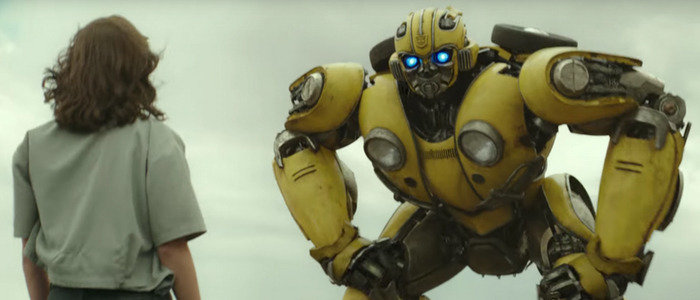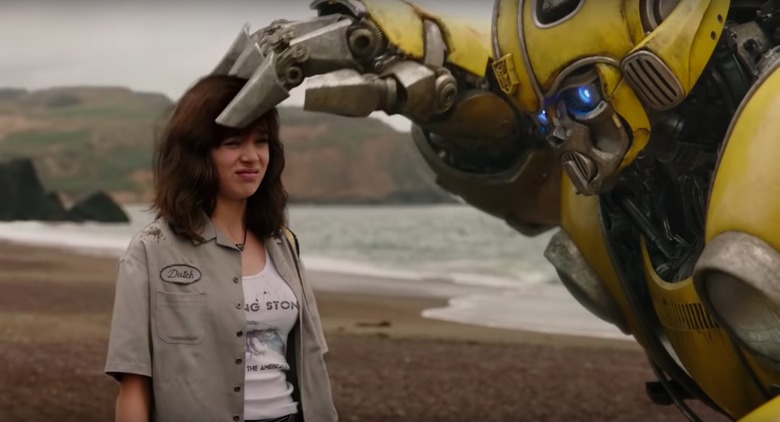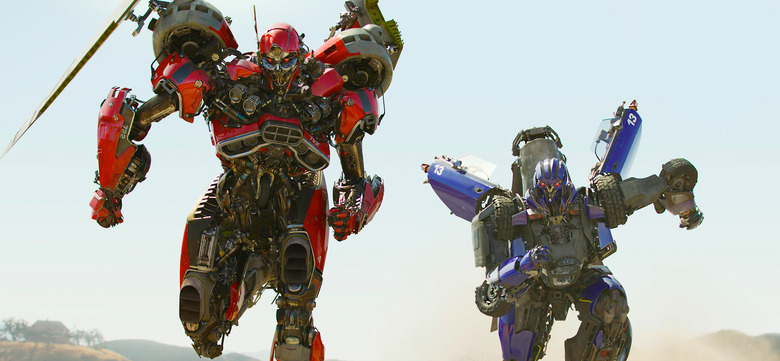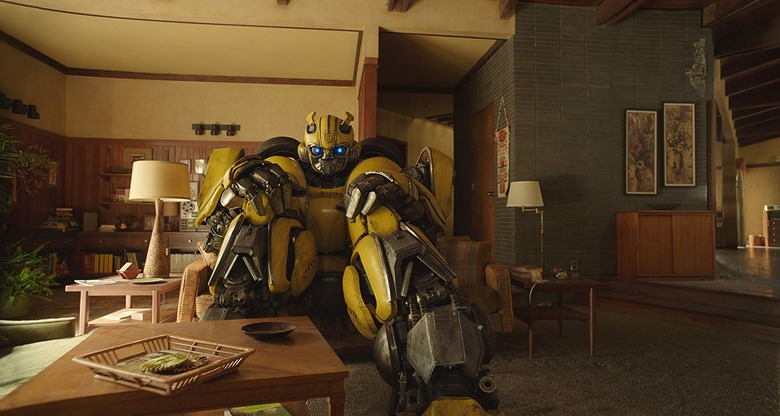'Bumblebee' Vs. Michael Bay: How The New 'Transformers' Movie Reinvents The Franchise For The Better
(Welcome to The Soapbox, the space where we get loud, feisty, political, and opinionated about anything and everything. In this edition: they finally made a Transformers movie that doesn't suck.)Bumblebee is good. There is now a Transformers movie that doesn't suck.That would have seemed shocking a couple of years ago, when the five-film series boasted not a single legitimately decent entry, but did have multiple compelling candidates for Worst Blockbuster Ever. But Paramount made some great decisions, coming out of the Michael Bay years. Bumblebee is a testament to the power of hiring good talent – in this case, talent who turned in a movie 180 degrees removed from Bay's quintet of incoherent, sociopathic disasters.
A Script That Doesn't Suck
Starting with the script: Bumblebee has mountains of the humanity that Bay's films lacked. Bay's exceptionally unlikeable protagonist Sam Witwicky was ostensibly the core of the first three films, but characterisation always seemed like it was unimportant to the director, compared to robots and military hardware smashing into each other in the pursuit of incomprehensible goals. All the characters hated each other, and loved chasing techno-MacGuffins, but I couldn't tell you why. Not based on the movies, at least.Contrast that with Christina Hodson's script for Bumblebee, which features uncredited work by Edge of Seventeen's Kelly Fremon Craig. Though the yellow Transformer is the title character, the movie is truly centered on Charlie (Hailee Steinfeld), who, compared to Witwicky, isn't just three-dimensional, she's a multi-dimensional tesseract. Pulling off an unlikely mixture of sullen and chipper, Steinfeld makes Charlie incredibly relatable. She's a teenager on the cusp of adulthood and freedom, bitter that her family has moved on from her father's death so quickly, with a personal history, tastes, a shitty amusement-park job, and an overriding interest in mechanics.
Characters That Don't Suck
Everything from her first encounter with Bumblebee to her actions in the film's climax stems from something in her character. It makes sense that Charlie bonds with Bumblebee – he's an alternative to a family that feels as alien as the robot actually is. Bee becomes something of a surrogate father and brother figure to Charlie, who craves encouragement, understanding, and a sympathetic ear; without speaking a word, he helps her sort through her circumstances and feelings. More practically, he's also Charlie's first car, and this is where Bumblebee truly eclipses Bay.Bay trumpeted his first Transformers as a story about "a boy and his car," and while he paid lip service to that notion, the result isn't as compelling as in Bumblebee. Charlie's parents don't buy her a shiny new Camaro; she earns a shitty old Beetle, by repairing it herself. The car doesn't represent an opportunity to look cool and impress girls; it represents a self-directed future and freedom from Charlie's family life.I never bought Sam's connection to Bumblebee. I buy Charlie's absolutely. It's in Steinfeld's glee at getting the car working. It's in her genuine awe and amazement when he comes to life. It's in the relationship built between the two in scene after scene. And it's in Bumblebee himself, one of the most successful CGI characters of the year, adorable and full of personality. For all that Charlie's family life explicitly invokes John Hughes, her relationship with Bumblebee evokes Ted Hughes – specifically, The Iron Giant. I'm not sure I'd hug Bumblebee's cold steel body like Charlie does, but I ended up loving the character nonetheless.
Action That Doesn't Suck
Action, too, sees a significant upgrade in Bumblebee, thanks to a drastic reduction in complexity. Michael Bay is the king of blowing stuff up. He's one of the few directors who still insists on practical on-set explosions even if the robots causing them will be CGI. For all his flaws, he's a borderline genius at making individual shots look as exciting and expensive as possible. His flaws arise when those shots have to chain together to tell a story. Bay trained in the music video and commercial world, where sequences are more about feel than continuity. As a result, his set pieces often make little geographical or narrative sense, and though they're definitely successful in communicating their intended effect, that effect is usually one of chaos. It's hard to watch and near-impossible to follow.Comparatively, Bumblebee doesn't have as much action, as many explosions, or as many robots punching each other. But what the film loses in scale, director Travis Knight (the Oscar-nominated Kubo and the Two Strings) more than makes up for in clear choreography and action storytelling. Aside from a mercifully brief Cybertron-based prologue, Bumblebee's action is small in scale and simple in intent. No sequence features more than three Transformers at once, and every sequence has a clearly-defined purpose: get Charlie to safety, get to a communications tower before the Decepticons do, prevent the Decepticons from activating said tower. Simple camera movements illustrate the relative geography of players and their objectives. It's even infused with character: thanks to the setup work in the script, it means something when Bumblebee protects Charlie, and it means something when Charlie uses her engineering skills to dismantle the Decepticon transmitter. This is all basic functionality, and it's a joy to see it finally emerge in this franchise.
A Worldview That Doesn't Suck
The small scale of Bumblebee's action setpieces also demonstrates a resounding rejection of Bay's worldview. The Transformers films are obsessed with military hardware, sacrifice, and American ideals. Large chunks of the movies are given over to heroic footage that might as well be drawn from the Pentagon archives. In Bumblebee, the military is still present, but it's solely a means to a narrative end. John Cena's military man has a character arc that takes him from a grizzled, hateful officer to someone more compassionate. And when the military shows up in force in the film's second half, it's literally out-of-focus in the background of a shot of Charlie. I can't think of a better expression of the film's priorities than that.Finally, Bumblebee bears not a shred of the cruelty that characterised Bay's Transformers movies. Knight never points and laughs at his characters. Roles aren't written or cast based on racial or cultural stereotypes. The film's women are written and performed as ordinary human beings (and one delightfully villainous Transformer), not sexual objects in lingerie. The only character who takes their top off is Jorge Lendenborg Jr's would-be love interest character, and that relationship culminates in a believable "eh, we're not quite there yet." The film's themes – it has themes! – deal with working through one's feelings, coming to terms with heartbreak, and learning to appreciate interpersonal relationships. There's more empathy in any single scene of Bumblebee than in five films (and about four thousand hours) of Michael Bay.It's hard to tell how much Bumblebee benefits from the franchise bar being seabed-low, versus how much it stands on its own. But the more I think about it, the more I connect with the central character, the more storytelling layers I remember that link back to that character. It's not a miracle that the movie exists – again, many of its successes are basic elements one should expect from any film – but in the wake of its predecessors, it sure feels like one. Knight, Hodson, Steinfeld, and their collaborators have crafted a movie that's shockingly likeable, funny, and even moving. If the franchise-holders are smart, they'll treat Bumblebee as a wholesale reboot of the series. We can ill afford another Revenge of the Fallen.




